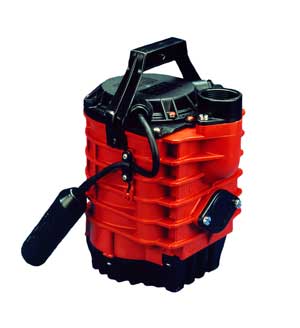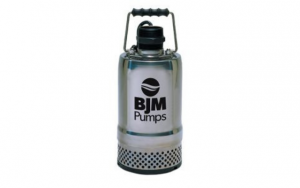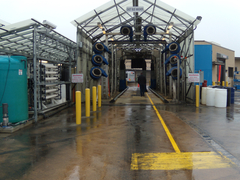Modern metal plating is a process that was developed in the early 1800s. It’s now widely used for coating everything from chrome bathroom fixtures to parts used in the aerospace industry. Metal plating is the process of putting a thin coating of metal over another object (the work), which is also often metal. The coating metal is chosen for its beneficial properties based on the specific application. Sometimes it’s purely decorative, for example gold or silver plating on jewelry. Sometimes a plating material is chosen for a combination of reasons — perhaps because it’s both decorative and protective, as in many chrome applications. And there are many other reasons you might want something to be coated with metal.
coating of metal over another object (the work), which is also often metal. The coating metal is chosen for its beneficial properties based on the specific application. Sometimes it’s purely decorative, for example gold or silver plating on jewelry. Sometimes a plating material is chosen for a combination of reasons — perhaps because it’s both decorative and protective, as in many chrome applications. And there are many other reasons you might want something to be coated with metal.
Corrosion-resistant metals, for example chrome, provide protection, thereby extending a product’s life. Certain metals may be used to provide additional strength to an object, or a metal might be chosen because it provides a better surface to which paint will adhere, or to which something can more easily be soldered. Some metals are chosen for their electrical conductivity.
There are several ways the process can be completed. The most common method uses an electrolytic cell, or electroplating unit, in which the piece to be plated becomes part of an electrical circuit. The electroplating unit is filled with an electrolyte solution (the bath) into which the work is submerged. The work serves as the negative electrode, or the cathode. The positive electrode, or anode, is sometimes a bar of the metal being plated, but can also be an inert metal used simply to complete the electrical circuit. The combination of electric current and ingredients in the plating bath cause the plating metal to dissolve and transfer onto the work
There are various configurations for completing the process, for example mass plating, rack plating, in-line plating, and continuous plating, depending on what is being plated. Small parts such as screws and nuts may be put in a barrel that is submerged in the bath and rotated. Other types of work may be hung from racks and dipped into the bath, or specialty piece may be handled individually.
Before plating, the work may undergo a variety of pretreating processes, including cleaning or degreasing, surface treatment or modification, and rinsing. Once the surface has been prepared, plating begins and often requires more than one application. In between applications the work is rinsed and the surface may be treated further, often with some type of acid, before the next layer of plating is added.
The electroplating process is water intensive. Water is required for the bath, and rinsing between applications requires additional water. Chemicals used during the various stages of the process can be extremely harsh. Eventually the solutions and the different metals and chemicals they carry must be treated and disposed of.
A Case Study in Sticking With What Works
AOTCO Metal Finishing, Inc., is a supplier of specification plating and electropolishing services in Billerica, Mass. In  business since 1975, AOTCO provides specialty plating to the aerospace, optical, telecommunications, medical, and electronics industries. Its customers include Ball Aerospace, Boeing, Lockheed Martin, Northrup Grumman, Raytheon, and Rolls Royce, among others.
business since 1975, AOTCO provides specialty plating to the aerospace, optical, telecommunications, medical, and electronics industries. Its customers include Ball Aerospace, Boeing, Lockheed Martin, Northrup Grumman, Raytheon, and Rolls Royce, among others.
Although it does work for some big companies, AOTCO is a relatively small company with about 45 employees. The company works extensively with gold, silver, nickel, tins, and coppers.
“We do just about any kind of electroplating and electroless nickel plating,” said Tim Tripodi, Facilities Manager for AOTCO. “Basically what we do is we put metal on metal.”
The company may have as many as 900 different jobs in a single month, Tripodi said. Most of the work is from the United States, but they get contracts from all over the world. Jobs have included electronic components for tanks, aircraft, and satellites. They’ve even worked on components for the Hubble Space Telescope.
“Most of the time we don’t even know what the end result is because we’re just getting a small piece of whatever they’re making,” Tripodi said. “We just did some anodizing on a helmet that this company is making for the military. [It’s] just unbelievable the technology that’s in that helmet, and this is just a small component of that helmet that we do.”
One of AOTCO’s specialties involves a process called masking, in which paint or tape is applied to areas of the part to prevent the plating from adhering to specific areas. They also plate many electronic housings — usually aluminum — with everything from tin to gold.
A Demanding Environment Requires Tough Equipment
The electroplating industry uses copious amounts of water. Depending on the process it’s used for, water can be contaminated with heavy metals, harsh chemicals and acids, oil and grease.
“The water cleans the material before you plate it and it cleans it after. It’s kind of like painting. If you don’t clean that surface, the plating won’t stick to it,” Tripodi said. “Before you go in the bath you go in the water to rinse off any of the acids that you might have used to clean the surface, what we call activating the surface.”
AOTCO uses about 8,000 gallons per day of water for its various cleaning, plating, and rinsing processes. Periodically, the baths and rinsing basins are drained into small pits. The spent fluid is then transferred to a larger pit to be treated. Some of the water may be gravity fed into the larger pit areas, but most of it is pumped.
“Right now I have probably nine pumps working,” Tripodi said. “Generally I have a Perfecta® pump in a small tank that receives all this water and it’s pumped to another larger pit where the water is treated.”
Different areas receive different qualities of water depending on what’s being plated, but generally the water is aggressive — sometimes extremely so. Sulfuric acid, hydrofluoric acid, and phosphoric acid are commonly used in the plating process.
“Those are the three — if they’re real strong they’ll go after everything in the pump” including the plastic covering, Tripodi said.
He explained there’s not a good way of knowing the exact potency of the water once it’s drained into a pit where it may mix with other spent liquid. Each job is unique and has its own learning curve. A particular job may have a new kind of part that suddenly starts dragging more acid than normal into the rinse, unexpectedly subjecting the pump to harsher chemicals.
“There’s not a lot you can do with that other than try to dilute it more,” Tripodi said.
Growing With the Industry
Moving the highly caustic, often hot, water would be a challenge for any pump. AOTCO started using the BJM Perfecta® Series pumps about 24 years ago. They have stuck with them because they performed better than anything else on the market and continue to do so. To some extent, plating technology in general, the AOTCO plant, and the ingenuity used in building Perfecta® pumps, have grown up together.
Although the general concept of electroplating hasn’t changed much from when it was first invented, in practice there have been significant improvements to the process in terms of the technology and chemicals that are used.
These improvements have placed a corresponding and increasing demand on the equipment — namely the pumps that are in continual contact with the aggressive liquids involved in electroplating. As the electroplating process has improved, the Perfecta® pumps have had to keep pace.
“I started using the Perfecta® pumps probably 24 years ago,” Tripodi said. “They have increased the material that the pumps are made of. They make them now with stainless steel components and titanium components.”
AOTCO sources its pumps from Maltz Sales, headquartered in Foxboro, Mass. Maltz offers a comprehensive line of BJM Pumps, but for this job, the Perfecta® Series pumps continue to fill the bill.
“They’re a good fit for this. They’re corrosion resistant, they’re submersible, and they have a float on them,” said Skip Bowen, sales person for Maltz. Bowen, who is the rep for the AOTCO account has been with Maltz for 13 years and feels confident in continuing to recommend the BJM’s Perfecta® Series pumps.
“They’re a very good pump company. They respond well, they’re a good price, and they’ve got a good inventory. We stock these submersible Perfecta® pumps, and we sell quite a few of them to AOTCO and several other companies,” Bowen said.
In addition to the heavy duty 304 and 316 stainless steel and titanium options, some of the specifics that make the Perfect Series pumps especially well-suited for this and similar applications:
- Only Electric Submersible Pump in the world that has its entire motor encapsulated in NORYL®.

- Virtually unbreakable
- Compact and lightweight at only 13.5 lbs.
- Never rusts. Excellent resistance against acids, alkalis (Consult chemical resistance chart for compatibility between pump materials and liquid before operating pump.)
- On/off mechanical switch is easily adjusted to provide level control and to eliminate unnecessary running.
- Two discharge ports: one 1 ¼ in. inside threaded connection and one 1 ½ in. tapered hose connection delivered with each pump.
- Thermal breaker incorporated in motor windings shuts off power before over heating due to locked rotor or long periods of running dry (130oC).
- For permanent installation temperature not to exceed 135o
- For intermittent use submerge less than 20 minutes in 195oF maximum
Conclusion
Not only do they hold up to harsh chemicals, but the Perfecta® Series is also a sturdy, reliable, all around pump. “Most of them do have some sort of head pressure on them. There’s a couple that have more head pressure on them than others. They’re pumping up probably 13 feet and then quite a distance horizontally,” Tripodi said. “That’s why I’ve stuck with the Perfecta®, because that seems to work the best. It keeps its gpm up — even with the head pressure it’s still enough to do what I need it to do.” Even though AOTCO has been using the Perfecta® since before his time, Bowen agrees it’s a good fit for this application. “These pits get filled up with all kinds of chemistries,” he said. “It’s a great little pump. They stand up well.”
About the Author
Mike Bjorkman is Vice President of BJM Corp. and has more than 30 years of experience in the pump industry. He serves as Director of Marketing and IT for BJM Pumps, LLC and All Test Pro, LLC. Both companies are subsidiaries of BJM Corp. Mike can be reached at 1-860-399-5937.
About BJM Pumps
BJM Pumps, established in 1983, supplies electrical submersible pumps to industrial and municipal markets throughout the United States, Canada and South America. BJM Corp. is headquartered in Old Saybrook, Conn. For more information, visit www.bjmpumps.com.
About Maltz Sales Company
Maltz Sales Company has been providing fluid handling equipment and services to the manufacturing, biotechnology, food and beverage markets in the New England area for more than 35 years. Headquartered in Foxboro, Mass., Maltz provides process-related equipment — pumps, instrumentation, filters, tanks, heating, cooling, and plating gear — with the knowledge and experience required to support these products and systems. Visit www.maltzsales.com or call (800) 370-0439 for more information
About AOTCO
AOTCO Metal Finishing Inc., is based in Billerica, Mass., and has been providing custom metal plating and finishing to the aerospace, optical, telecommunications, medical, and electronics industries since 1975. For more information, visit www.aotco.com or call (888) 275-0880.





Comments